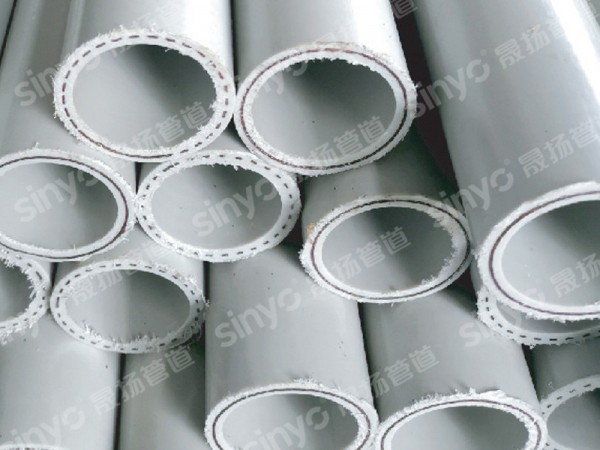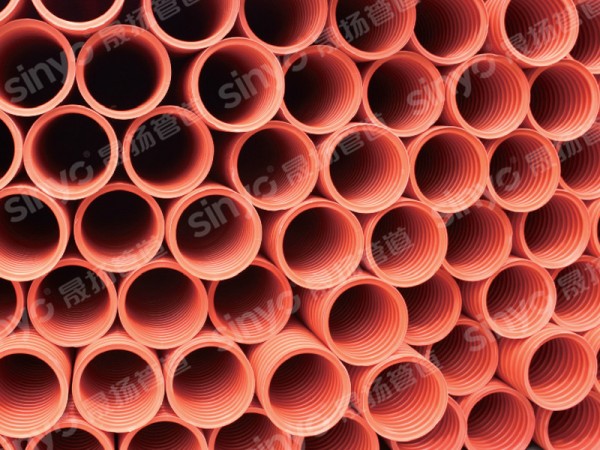1. Characteristics and classification of plastic pipes

Plastic pipe is one of the important branches of chemical building materials. It is a product formed by extrusion molding, injection molding, compounding and other technologies using polymer materials as the main raw materials. Compared with traditional cast iron pipes, galvanized steel pipes, cement pipes and other pipes, plastic pipes have the advantages of energy saving, material saving, environmental protection, light weight, high strength, corrosion resistance, smooth inner wall, easy construction and maintenance, and long service life. It can be widely used in building water supply and drainage, municipal water supply and drainage, power and optical cable sheath, industrial fluid transportation, agricultural irrigation, urban gas and other fields.
Plastic pipes are classified into polyvinyl chloride (PVC) pipes, polyethylene (PE) pipes, polypropylene (PP) pipes, polybutene (PB) pipes, and acrylonitrile-butadiene-styrene (ABS) pipes according to their materials. And other categories. At present, the market has formed a product structure dominated by PVC, PE and PP-R pipes. PVC materials are suitable for bonding and flexible connection of rubber rings. PVC pipes are mainly used in the fields of water supply and drainage, agriculture, power and communications; PE and PP are suitable for hot melt and electrofusion connections. PE pipes are the main plastics for municipal water supply and drainage projects. Pipes; PP is mainly made of PP-R pipes, which are mainly used for cold and heat pipes and heating.
2. Global overview

As early as the 1930s, developed countries such as Europe and the United States began to produce and apply plastic pipes. In 1933, plastic pipes first began industrial production in France and the United States. In 1936, plastic pipes were used for the transportation of water, acid, and construction wastewater for the first time in Germany. In 1970, the International Organization for Standardization established the “Standardization Technical Committee for Plastic Pipes, Fittings and Valves” (ISO/TCl38). The internationalization, generalization and serialization of product standards promoted the production and application of plastic pipes in various countries. Due to the lightness, flexibility, corrosion resistance, compression resistance, energy saving and environmental protection of plastic pipes, the plastic pipe manufacturing industry has developed rapidly, and with the development of the plastic industry, the continuous advent of new plastic materials has made plastic pipes.
The scope of application of the product continues to expand, and it continues to replace metal pipes and other traditional pipes. After decades of development, the main varieties of plastic pipe products are basically divided into three categories: PVC, PE and PP, which are widely used in urban and building water supply and drainage, communication power cables, natural gas transmission pipes and other fields. The new construction and transformation of urban infrastructure has driven the demand for plastic pipes. On a global scale, plastic pipes are at different stages of development in different regions due to differences in economic development levels. At present, in developed countries and regions such as Europe and the United States, the application of plastic pipes has become very common. The per capita usage of plastic pipes is relatively high, and the market growth rate is not high. In developing countries, due to the large amount of infrastructure investment and construction, the application of plastic pipes is in a period of rapid growth, and the entire market maintains a rapid growth rate. The Asia-Pacific region will continue to maintain its status as a global market.
The sustained and rapid development of the construction industry in developing countries in the ASEAN region has driven the market demand for plastic pipes for water supply and drainage. At the same time, economic growth has also driven the demand for communications, cable sheathing and gas pipes. Just take Cambodia as an example. Its GDP has grown close to 7% for several consecutive years, and its economy is in a period of rapid development. Its domestic infrastructure construction has greatly increased its demand for plastic pipes and other building materials.
The development of the construction industry drives the rapid development of the upstream building materials industry, which will significantly promote the consumption of plastic pipes.
Media Contact
Company Name: Fujian Shengyang Pipeline Technology Co., Ltd.
Email: Send Email
Phone: 0591-62838555
Country: China
Website: https://www.fjplasticpipe.com/
